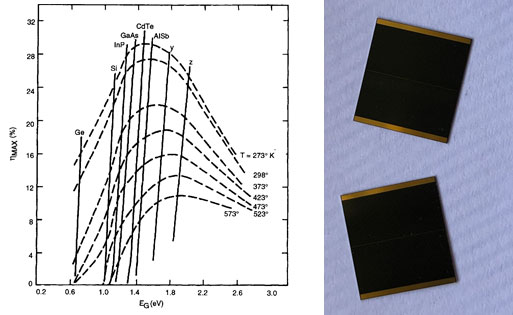GaAs solar cell is a three five group compound semiconductor solar cell. It has the advantages of high photoelectric conversion efficiency, good high temperature resistance and strong radiation resistance. It is internationally recognized as a new generation of high-performance and long-life space main power supply 1. As the main power supply of spacecraft, GaAs solar cells are directly exposed to the space radiation environment and are vulnerable to the radiation of space particles, such as charged electrons and protons, uncharged neutrons and rays. Radiation causes lattice defects in GaAs solar cells, such as vacancy, gap, vacancy impurity complex and so on. The defect caused by radiation is equivalent to the recombination center, which reduces the minority carrier lifetime and diffusion length in the solar cell, resulting in the decline of the performance of the solar cell, which is manifested in the decline of the I-V characteristic parameters of the solar cell.

Due to its working nature, solar cells are directly exposed to space radiation environment. It is very sensitive to space high-energy rays, especially the radiation damage and annealing of electrons and protons. Its main parameters such as open circuit voltage VE, short-circuit current IE and maximum output power pmaz will decrease with the increase of radiation fluence. The damage mechanism is mainly due to the high energy of radiation particles, which can produce considerable lattice defects in semiconductors, such as vacancy, gap filling, vacancy impurity complex and defect group. These defects are equivalent to recombination centers, which reduce the carrier concentration, minority carrier lifetime and diffusion length of solar cells, thus affecting the output characteristics of solar cells. The energy and radiation flux of various radiation particles are different at different altitudes and orbits of the earth. 1MeV electrons are usually used to equivalent the radiation of various charged particles in space, and the obtained data are compared with the actual situation.